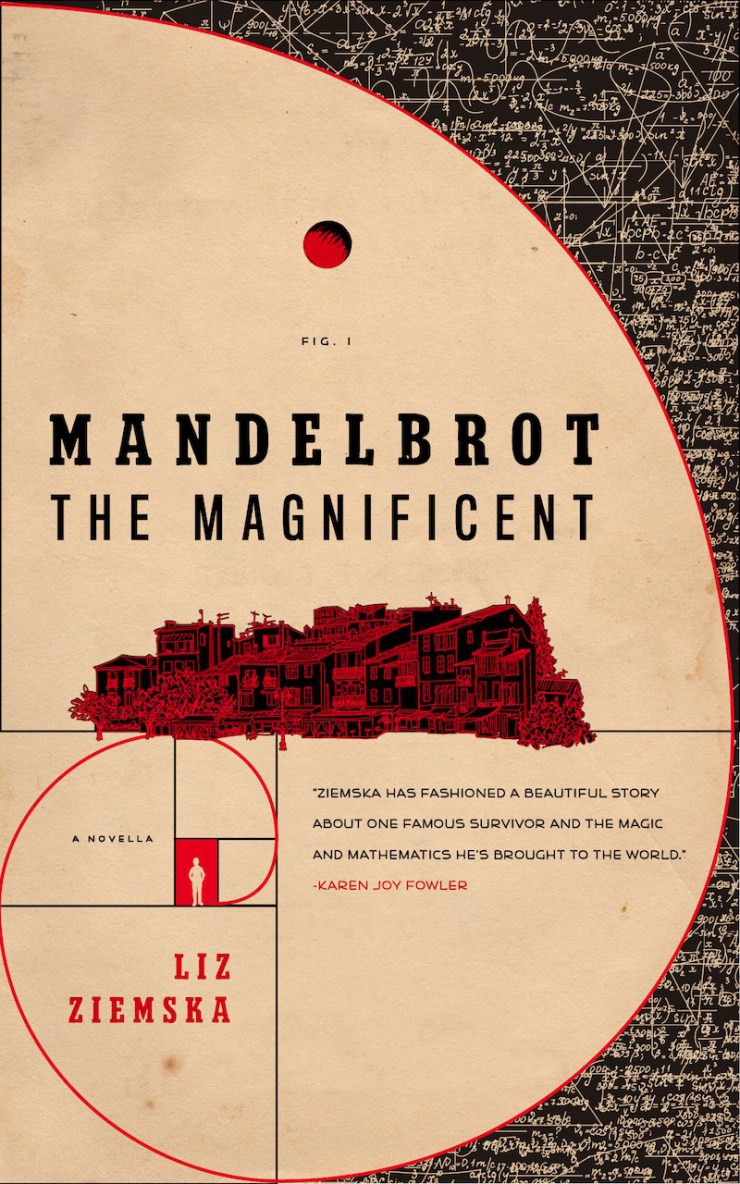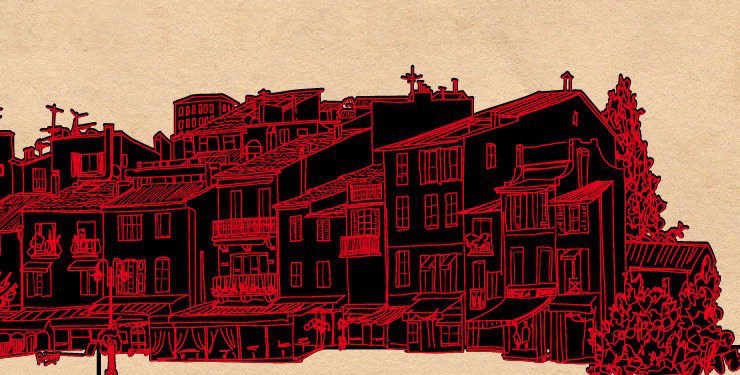Benoit B. Mandelbrot, the acclaimed mathematician and outspoken originator of the term “fractal”, died in 2010 at the age of 85. His contributions to geometry, dynamical systems, information theory, and modern finance, among others, have changed the face of scientific study and popular scientific inquiry. And yet, like so many, he could have been another unknown victim of the Holocaust. Felix Hausdorff and his family took their lives in January 1942 to avoid being sent to a camp. Wolfgang Doeblin, born only four months before Mandelbrot, ended his own life in 1940, at age 25, rather than be captured as a prisoner of war while fighting for France. The publication in 2000 of a 60-year sealed document of his unpublished works showed that he had developed work that anticipated crucial developments in stochastic calculus by over 10 years. But Mandelbrot was lucky. He and his family avoided capture by the shifting tide of European public sentiment, his family moving from Warsaw to Paris, and later settling in the small town of Tulle when the Nazis began to overtake French territory. Remarkably, he and his brother Léon were able to continue studies in Lyon as the war worsened, and amidst fear and fake IDs, escaped the brunt of what the war could have done to their lives.
And now, in Liz Ziemska’s striking novella Mandelbrot the Magnificent, we’re taken into an alternate history—one in which magic becomes as powerful as mathematics.
Buy the Book


Mandelbrot the Magnificent
Ziemska’s story poses the following scenario. Young Benoit is in awe of his uncle Szolem, and wishes to be a mathematician. However, it is an understatement to say that times are tough for Jews in Europe in the late 1930s: the threat of imminent Nazi invasion constantly looms, and with it the fear of internment or, as rumor has it, worse. Szolem is offered a position in Texas and leaves for the safety of America. What if Mandelbrot, as a teenager dreaming of greatness, grieving the departure of his mentoring uncle, and fearing the growing danger, learned how to use his mathematical studies for something greater? Something, perhaps, a bit more in line with a mystical aspect of Judaism to which he was previously unaware?
“God is a mathematician,” uncle Szolem had said to me on our long country rambles (which seemed so long ago). I had shown him that I could do the numbers, that I could be his equal, given time and some additional tutoring–so why hadn’t he taken me with him? … Shame on me. Ungrateful, is what I was, and selfish.
And furthermore, G-d is not a mathematician! Look at the clouds—they are not spheres. Mountains are not cones, light does not travel in a straight line, and bark is not smooth. Nature is rough and beautiful, not rigid and symmetrical, like the world of numbers in which Uncle Szolem lived.
Ziemska’s first-person angle, at first, reads as memoir; generally, the points of Mandelbrot’s history are solid enough, and only appear to shift into fiction when the prose gets a bit more descriptive about specific people, notably the school rival Emile Vallat, the child of anti-Semites whose position as best in class is threatened by Benoit, whom he considers a Jewish interloper. These scenes are reminiscent of all-too-familiar taunting by a common bully, but heavily weighted with the threat of said bully actual desiring to collude with the Nazis. To avoid further concern with Emile or anyone else looking to out him as Jewish, Benoit’s mother tells him: “You will do well on your exams… but not too well. Do you understand?”
Needless to say, Benoit does too well, and needs to save his family from his success. This is where the book starts to shift tone: Benoit starts to employ his understanding of the myriad mathematical structures in his favorite text, The Book of Monsters, help him incorporate some new-found mystical knowledge from a rabbi (and friend of his father and uncle) into finding a way to protect them. The self-similar Cantor dust, Koch snowflake, and Sierpiński triangle all offer their shared notion, a non-integer Hausdorff dimension, as a possible way out.
Where my interest primarily lies in Ziemska’s work is in the synthesis of this mathematical knowledge with religious knowledge. One key aspect of a deep mathematical understanding is to be able to consider an abstract object in multiple forms. Consider Ada Lovelace‘s commentary on this notion when discussing a substitution in a differential calculus problem:
I may remark that the curious transformations many formulae can undergo, the unsuspected and to a beginner apparently impossible identity of forms exceedingly dissimilar at first sight, is I think one of the chief difficulties in the early part of mathematical studies. I am often reminded of certain sprites and fairies one reads of, who are at one’s elbows in one shape now, & the next minute in a form most dissimilar, and uncommonly deceptive, troublesome & tantalizing are the mathematical sprites & fairies sometimes; like the types I have found for them in the world of Fiction.
–Ada Lovelace, to Charles Babbage, Jan. 1841
Similarly, Mandelbrot’s mathematical epiphany (as Ziemska portrays it) occurs when he recognizes an integral form as a volume; this insight later helps him develop different, more mystically-tinged, ways of viewing space as an abstract.
But this notion of “seeing” truths from different viewpoints has a distinctly religious feel to it. Hence, Benoit’s subsequent study of the Kabbalah—specifically, the mystical Jewish graph known as the sefirot, the “emanations” through which Ein Sof (literally, “no end”, i.e. “God as Infinity”) presents Itself to, and as, existence. This opens Benoit’s mind to connections between his analytical knowledge and his inherited faith system. How he unwittingly creates a syncretic magic between secular and sacred geometry, and finds a way to take advantage of an iterative, convergent sequence, is where the novella continues to switch between a fictional biographical narrative and a more fantastical exploration of the abstract.
In times of war, the focused mind and careful calculation can contribute to a cause, just as well as a weapon or a word. The difficulty of keeping this focused mind is another topic Ziemska touches upon: Benoit, only a teenager during the rise of the war, struggles to maintain a studious academic life under imminent danger from both the Nazis and those in school (in particular, the aforementioned Vallat) who would revel in his demise. Benoit weighs the options of joining the resistance fighters, possibly a nod to the troubled National Guard service of Evariste Galois 100 years earlier. (Galois’ mathematical and French revolutionary careers were cut short after a duel in 1832, at the age of 20. His main theory still bears his name.)
Ziemska’s work owes a debt not only to Mandelbrot’s autobiography, and perhaps the work of the Jewish scholar Gershom Scholem, but to those before her that have fictionalized the fraught lives of mathematicians during World War II. I was particularly reminded of Janna Levin’s A Madman Dreams of Turing Machines, which fictionalizes the lives of Kurt Gödel,whose Incompleteness Theorems and paranoia are woven into a portrait of a mind that, even after escaping to Princeton, cannot answer its most important questions, and Alan Turing, whose life before, during, and after the war is often sensationally portrayed as a struggle of computational genius (being the father of modern computing and a key player in British cryptography) and hidden, illegal homosexuality (for which, after the war, he was arrested and sentenced to hormone therapy).
But, overall, Mandelbrot was lucky. His fictional narration will interest those who enjoy magical explorations of mathematics and World War II. But what about those that were not so lucky? What would the June Revolution, and modern algebra, have been if Galois hadn’t succumbed to his duel wound the previous week? Where would probability theory be had Doeblin not prematurely ended his own life to avoid imminent capture? Perhaps Ziemska can tell us in her next story.
Mandelbrot the Magnificent is available from Tor.com Publishing.
Read an excerpt from the novel.
Suppose Michael Carlisle (@docintangible) is a mathematician and writer living in New York.










